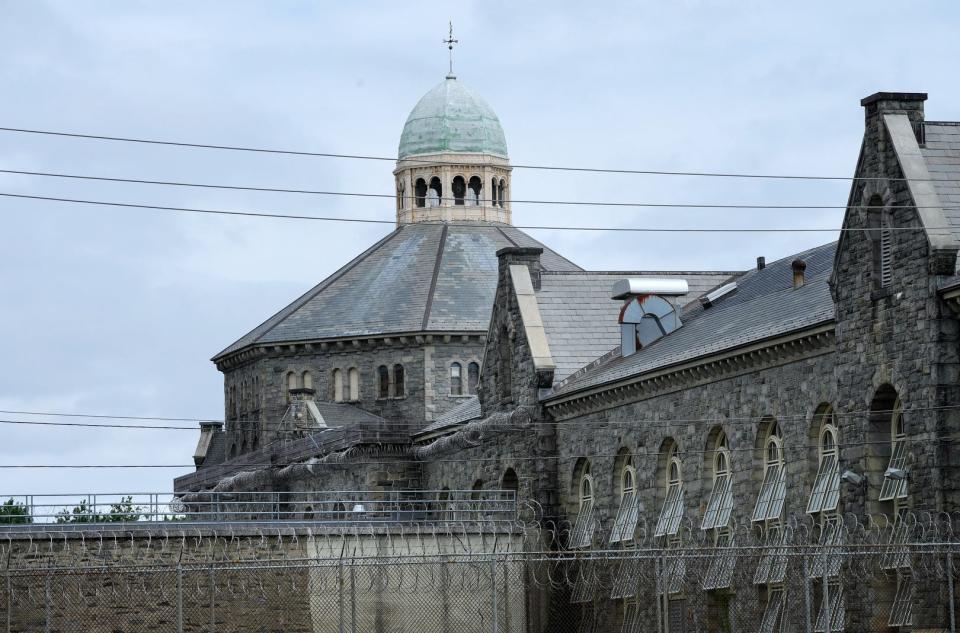Forecast: RI prison population will grow almost 30% by 2034. What's driving the increase?
CRANSTON – For the first time in more than 15 years, Rhode Island's prison population is rising, and state corrections officials expect it to continue growing over the next decade.
After the number of Rhode Islanders held at the Adult Correctional Institutions during the COVID pandemic's omicron surge fell to the lowest level since the late 1980s, it has bounced back as the public health emergency has receded.
From 2,080 inmates in December 2021, the Rhode Island prison population rose to an average of 2,132 people last year – and was 2,350 last week, according to Department of Corrections statistics.
That's still well below the pre-pandemic ACI population, around 2,600 inmates in the winter of 2020.
The hope: Inmate numbers wouldn't rise as COVID faded
But some in the criminal justice system and prison reform community had hoped that, given the long-term trend of declining incarceration rates, the inmate population might not bounce back to where it was pre-COVID.
Gov. Dan McKee's administration had hoped fewer inmates would allow the ACI to continue consolidating prison space, saving money on operations and facilities.

The recent increase in the prison population has opened an estimated $12.4 million hole in the Department of Corrections budget for this fiscal year, which ends next June, according to a quarterly report from the state Office of Management and Budget. Planned cell closings have been canceled and daily costs of things like food, clothing, linens, medical care and pharmaceuticals have gone up.
More concerning is the possibility that the inmate population keeps rising past the pre-pandemic mark in a reversal of the long-term decline in incarceration.
Why the size of the prison population matters
To plan for future needs, the Department of Corrections tries to project what the inmate population will be in the years ahead and expects that in the next fiscal year, which begins in July, the ACI population will rise again, to 2,470.
Those estimates are based on work by prison analytics consultant JFA Associates, which sees the Rhode Island population behind bars rising 2.5% annually over the next decade.
"Sizeable increases in the average length of stay for awaiting-trial populations seen in [fiscal year 2022-2023] are forecast to fuel an 8.9% growth in the awaiting-trial population between [this year and fiscal 2033-2034]," JFA wrote in its report to the state Department of Corrections in September.
The consultant added that "increasing admissions coupled with increases in the average sentences for sentenced male admissions" now suggest the ACI "sentenced population" is expected to increase almost 30%, or 2.5% per year, by 2034.
The JFA report estimates the Rhode Island prison population will reach 2,932 inmates by 2034.
Where does the expected growth in RI prison population come from?
Why might the Rhode Island incarceration rate begin a long, steady climb?
"Since the [Department of Corrections] deals primarily with custody, the reasons why the population increase is, unfortunately, not something we are able to speak to," Corrections spokesman J.R. Ventura wrote in an email, referring the question to the judiciary.
The most common theory is that the criminal justice system is still dealing with the backlog caused by the pandemic shutdown, in some ways similar to how COVID-related supply disruptions continue to reverberate in unpredictable ways through parts of the economy.
Rhode Island Judiciary spokesperson Alexandra Kriss wrote that "there are a multitude of reasons that could explain why there was a rise in incarcerated individuals."
She noted that "over the last year the courts were still hearing cases that were delayed or carried over due to COVID-19 procedures and protocols" and that "even with the adjustments to post-pandemic numbers, there are 20,000 fewer case filings today than in the years immediately prior to the COVID-19 emergency."
JFA Associates wrote that its Rhode Island projections from a year ago were 9% too low "largely driven by under-forecasting in the male awaiting-trial population from January 2023 to August 2023."
The consultant also noted that JFA noted that in Rhode Island's "indeterminate sentencing" system, parole eligibility and parole boards "in effect, decide an inmate’s length of stay," but did not point to any specific change in the last two years.
Even with population increase, RI is in better shape than US
Even with the uptick in inmate population, JFA said Rhode Island's property-crime rate and incarceration rate remain "significantly lower than that of the nation."
Rhode Island Public Defender Collin Geiselman said he hadn't been aware of the ACI population increase and assumes that the COVID bottleneck is responsible for the surge.
"My intial thought was it's the backlog," Geiselman said. "There were no trials for a couple of years. In addition to that, there was a pretty decent amount of time with almost no arrests or criminal prosecutions."
Early-release programs during COVID focused on inmates with fewer than 90 days left to serve. Geiselman said the experience showed there is room to push along criminal-justice reform and alternatives to incarceration.
"We didn't see the sky fall," he said. "In Rhode Island, as far as we know, of the people who were released, the percentage who re-offended during the time they would have been in prison was very small."
This article originally appeared on The Providence Journal: After lull, RI prison population to climb 30 percent in next decade

